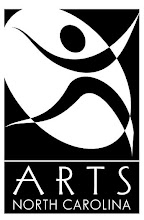It’s 5:15 and I am gazing out my office window over the central block of historic downtown Lumberton, located about 40 minutes south of Fayetteville. I have a great view from my lovely office on the second floor of the recently restored Carolina Civic Center historic theater, a smallish (seats 440) arts center that first opened in 1928.
For 15 minutes I watched the several hundred employees of the county courthouse and a few adjacent banks walking to their cars and quickly evacuating the downtown. By 5:25 the entire place is mostly empty. Besides my theater, the only thing open is the Blackwater Grille – a great restaurant located in a beautifully reclaimed and outfitted former warehouse a few blocks away. I hear from my many potential patrons that they’re either afraid of the downtown after 5pm or that it’s simply off their radar – why on earth would I stay/travel down there?
Yeah, it’s a bit of a marketing challenge and it goes a little beyond placing flyers on windshields or puncturing tires (just kidding!). Lumberton’s not alone, though, and its beautiful architecture and river (the Lumber) make its potential obvious to visitors.
Reclaiming empty downtowns for productive use is such a key component for community growth and has been accomplished in some of my favorite places in North Carolina. I’m thinking of Salisbury, Sanford (with its own historic theater), and the classic story of Triad Stage that helped rejuvenate Elm Street in downtown Greensboro. Even Statesville is renewing storefront by storefront. Downtown Wilmington, where I also live, was empty 18 years ago when I first moved there, having rezoned strip clubs and such out of existence…and then the pioneers started buying up and moving in and opening galleries, restaurants and theater spaces.
And so much of this revitalization is based on or around the arts. A few like-minded individuals –some with money and connections and others with raw passion- make it happen. It’s always a battle but a theater, a few galleries, a history museum in an historic site, a few antique shops and suddenly you’ve got some energy and then visitors and then tax revenues and so forth. Often it just starts with festivals or a First Night event.
Of course, which comes first, the chicken or the egg? The arts-based attractions or the proof that any of this works enough to be worth the investment of time and money and advocacy? Maybe the theater and the Blackwater are the first of a trend but we need more to create the critical mass.
A 2006 Dayton Daily News article recounts the purchase and restoration of the 19th –century Newberry Center opera house located smack in the center of downtown and quotes the couple who bought the dilapidated building for $85,000: “They can really serve as an anchor for the small-town revival.”
The North Carolina Arts Council’s strategic plan, which can be downloaded from the web site at www.ncarts.org , contains “Vibrant Communities” as one of its five goals, including making the arts “a centerpiece of North Carolina's changing cityscapes and city life.” You can read it but one of the strategies calls for starting a “smART Cities” program to help cities create arts and entertainment districts and work spaces for artists. Also included is capital funding to help maintain those “pioneer” storefront galleries and textile mill museums that made revitalization of their downtowns possible. Hey, maybe there will be something in there for my little theater!
If you haven’t read it yet, the “Creative North Carolina” strategic plan is a document filled with powerful ideas but the timeline for its implementation obviously is subject to the state’s economic recovery. Arts North Carolina, our statewide advocacy organization, isn’t in any kind of holding pattern, though, and I’m really looking forward to the good work ahead – with your help.
Richard Sceiford
Carolina Civic Center (Lumberton)
ARTS North Carolina Board of Directors
Please Visit the New Theatre North Carolina
13 years ago

